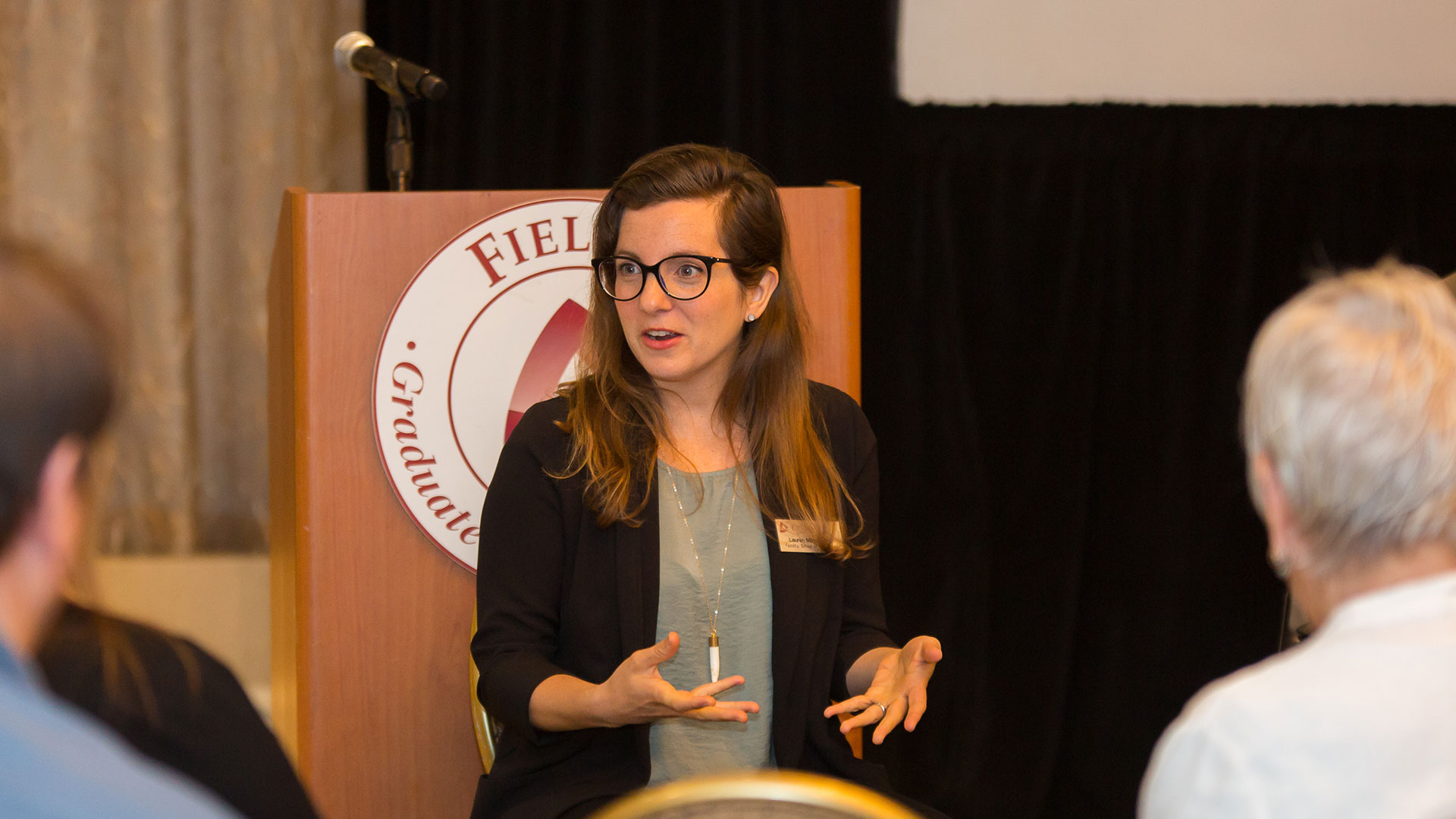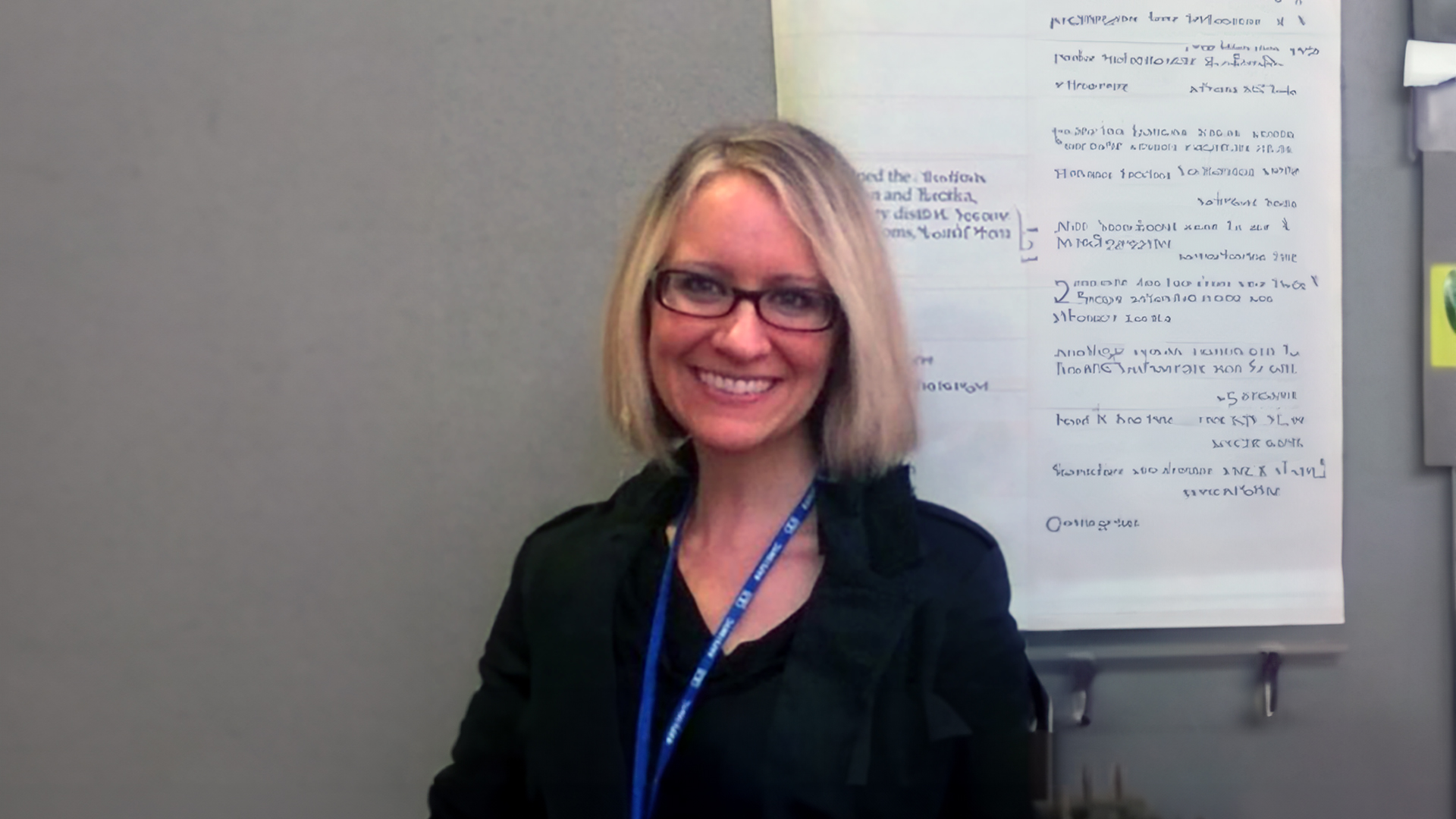
Kaylin R. Staten, APR, MPRCA
Associate Director of Communications Kaylin R. Staten, APR, MPRCA recently wrote an article for PRSA (the Public Relations Society of America’s Strategies & Tactics publication. The full article — centered on positive psychology, public relations and communications, and mental health advocacy – is below.
Tune In: A Model for Well-Being and Self-Reflection
With the always-on roles and responsibilities of the public relations industry, it can be challenging to find the time and mental capacity to seek our own purposes and happiness.
This is where positive psychology can aid us as communicators, particularly in our functions as counselors, reputation managers, and people-oriented professionals – without losing the negative and neutral effects that also color our situations and lives.
According to an American Psychologist abstract from psychologists Martin Seligman and Mihaly Csikszentmihalyi (2000), positive psychology is the “science of positive subjective experience, positive individual traits, and positive institutions promises to improve quality of life and prevent the pathologies that arise when life is barren and meaningless.”
The PERMA model of positive psychology is a theory created by Dr. Martin Seligman composed of five elements that contribute to well-being: Positive Emotion, Engagement, Relationships, Meaning, and Accomplishments/Achievements. Here are some ways you can start to blend the PERMA model into your work and life as a communicator:
POSITIVE EMOTION
Sensory Intelligence
While we cannot always predict our target audiences’ sentiments, we can use our ever-present gifts of observation and understanding to reach them where they are. I am a Highly Sensitive Person (HSP), and I often reflect on how my tendencies and traits can be used as superpowers. Sensory intelligence allows us – highly sensitive or not – to use our senses (sight, hearing, taste, touch, smell, and moving) and deeper processing to assess the world around us. In public relations, we can tune in to what resonates with our target audiences, from an event aesthetic to the overall tone of a message and how it will be received.
Coping
Of course, we do not operate in silos and have our own sets of emotions, norms, values, and other facets with positive, negative, and neutral effects. It’s important to view all emotions as nonlinear, with emotions coming and going like wavelengths. When we make an effort to consciously cope on an individual level – no matter what that looks like – we can also cope on the collective level for our target audiences and others.
ENGAGEMENT
Being in the Present Moment
I love to uncover nuggets of inspiration from pop-culture references. In my favorite “Star Wars” movie, “The Empire Strikes Back,” Yoda tells Luke Skywalker, “This one a long time have I watched. All his life as he looked away – to the future, to the horizon. Never his mind on where he was, what he was doing.” PR is a constantly moving profession, and we can often lose sight of the present moment and become caught up in RPIE minutiae. Take a break to enjoy moments, actively listen during a meeting or interview, and sit with feelings as they arise.
Authenticity
Gone are the days of a perfectly curated Instagram feed or high-dollar videos. While value still lies in these strategies and tactics, our audiences look to brands, organizations, and individuals to stand for something. We crave a connection that is deeper than ourselves, especially post-pandemic. No matter our PR role or organization’s mission, be authentic. Done is better than perfect, and our audiences will often relate to us more without the PR mask of perfection.
RELATIONSHIPS
Communication Styles
Relationship-building is at the heart of public relations, but we can sometimes find ourselves using tunnel vision with our own communication, no matter how many expert hours we have logged. As you do your daily work, I also urge you to look at your own individual communication style. Are you passive, passive-aggressive, aggressive, or assertive – or perhaps your own concocted mixture? Aim for assertive communication that doesn’t isolate anyone but also doesn’t compromise who you are, too.
Change Management and Conflict Resolution
No matter where you are in your career, you invoke change in your PR role and throughout your organization. That could look like having a seat at the table during a strategic planning meeting, working through conflicts to support positive outcomes, or introducing a new campaign idea. While these can sometimes be incredibly difficult movements, taking small steps toward a goal can help you set your own intentions.
MEANING
Resilience
All of us are in search of a higher calling or purpose in life. Our values can positively influence how we seek meaning and our own forms of self-actualization and transcendence in Abraham Maslow’s Hierarchy of Needs. Resilience allows us to face adversity, learn and grow from it, and continue to build “mental toughness.” All of us have had experiences that have molded us into who we are, and channeling that inner strength and focus can allow us to discover the meanings of projects, our career trajectories, and more.
Compassion
We frequently hear how we should be “empathetic leaders,” and while I do not necessarily disagree, I strive to be a compassionate leader. Compassion is more two-way, while empathy is still a one-way form of communication and ideology. Empathy and compassion are both positive emotions, but compassion is a true understanding of what someone else is feeling and then taking action to alleviate that suffering. The Harvard Business Review states that empathy is “I feel for you,” while compassion is “I am here to help.”
ACCOMPLISHMENTS/ACHIEVEMENTS
Successes
We do this one incredibly well as PR pros. However, I am often so engrossed in telling others’ stories that I completely bypass my own. As communicators, it’s also vital to tell our own valuable stories, no matter how awkward, pretentious, or nauseated we feel. Our stories and successes matter, and we can shed light on causes, lessons, and more along the way.
Failures
Each of us has failed at some point or another, whether we have missed a deadline, have only given 50 percent on a project that eventually flopped, didn’t handle a situation in the most professional way, etc. As communicators and leaders, we can empower ourselves and our teams by not dwelling on the mistake itself but on what we have learned from it.
Reflective practices, such as PERMA, allow you to consistently grow into who you are as a human and professional. It increases well-being, decreases burnout, and provides clarity. When we look inward, we can transform the world outside of ourselves.
Bio: Kaylin R. Staten, APR, MPRCA, is an award-winning, accredited public relations practitioner and writer based in Huntington, WV, with 20 years of professional communications experience, from high school to present day. She is the CEO and founder of Hourglass Media, Associate Director of Communications at Fielding Graduate University, host of The Wholeheartedly Podcast, and PRSA East Central District’s 2023 Chair.
Copyright © 2023 by Strategies & Tactics. Reprinted with permission from the Public Relations Society of America (PRSA.org).
Join Over 7,500 Fielding Alumni Located Around The World!
Change the world. Start with yours.™






Get Social